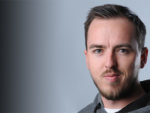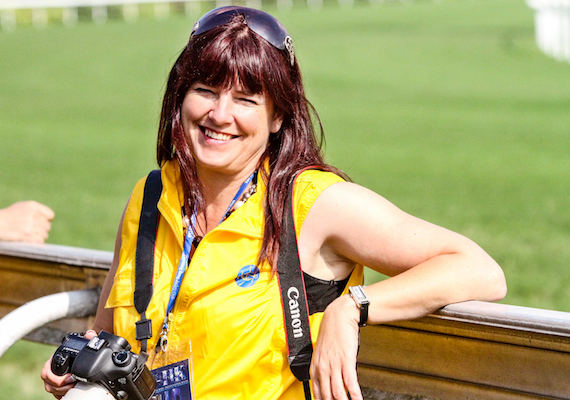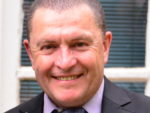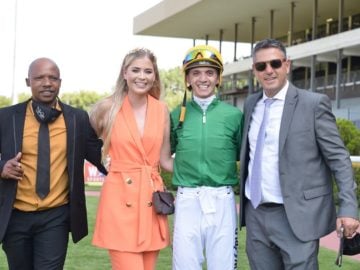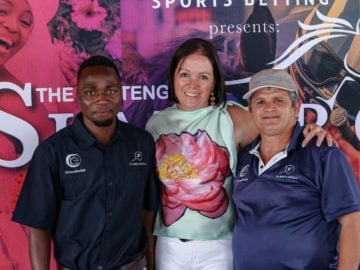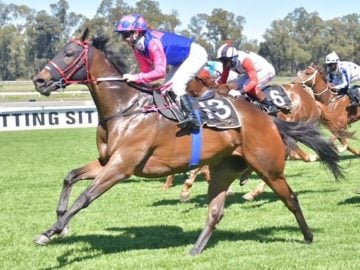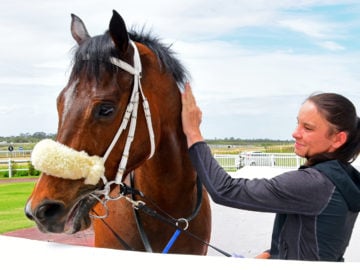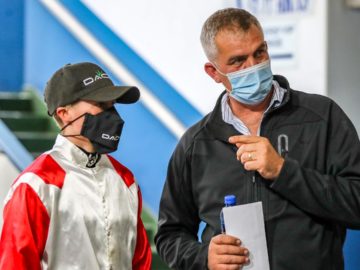The expression “If you can’t find a door, build one’, could have been designed for Liesl King. Law student, chartered accountant, breeder, international conference coordinator, board director, single mother, and international photographer and journalist. There are few who can match her prodigious energy, drive and determination to make things happen.
About Liesl
Liesl King grew up in Stellenbosch, graduating from Bloemhof Girls High School. She studied law at Stellenbosch University, but decided against doing Articles, citing an ethical conflict at the prospect of defending someone who might be guilty. Instead, she chose a post grad in translation and editing, so a career in journalism has always been on the cards.
She spent a year abroad, first running a riding school in Mill Hill East in the UK and then heading across the Atlantic to run a dressage barn in Boston in the US. Back in South Africa, intrigued by the opportunities offered by the conversion course her boyfriend was doing, she signed up for a BCom, became a chartered accountant and joined KPMG. She worked in the forensic department, where she met her future husband, but when the commute from Paarl to Cape Town became too much, she decided it was time for a change.
“I worked for a small business in Paarl for a while, but eventually started my own practice, doing CC’s for local farmers in the valley, bills, wages etc. It was a good job to do from home. When my youngest child turned 10, I decided to go back to work. Peter Gibson was looking for someone for Racing South Africa and I became their GM for 2 years. During that time I went to the Dubai World Cup and realised there was amazing racing outside South Africa.”
“A pivotal moment came when I took up playing polocrosse in 1992. In 3 months I managed to break my wrist, elbow and neck, which meant I couldn’t ride any more, but being horse mad, I needed to have horses, so we moved onto a farm in Paarl. There was a stud down the road, which happened to belong to Anton Shepherd. One day I told him his horses manes needed pulling and he responded that I ought to get some broodmares – as they never needed their manes tidying! I started as a partner in 2 mares, and at one time owning 6 and breeding as Monarch Stud. The best horse I produced was a gelding named Sunrise, who was trained by Dominic Zaki and was eventually sold to Dubai.”
“Knowing my love for pedigrees and breeding, Anton invited me to a Cape Breeders’ Club meeting and a year later I decided to arrange a pedigree conference. While there wasn’t much enthusiasm for it initially, we managed to secure the likes of Steve Roman, Marianne Haun, Anne Meredith and Ian Balding as speakers and over 200 attendees. After that, the CBC asked me to join the board. Veronica Foulkes was the Chairperson at the time and when she stepped down, I was offered the position. Along with that came a seat on the Gold Circle board as breed representative.”
“When I stepped down from the Cape Breeders’ Club, I also resigned from Gold Circle as I felt I’d done my bit. I got divorced at about the same time and had to find a job. Fast. I had been writing the odd article for Gold Circle’s Parade magazine, realised I enjoyed it, and decided to become a racing writer. I picked up some of my old accountancy clients to make ends meet, but set my sights on becoming a journalist. Of course you don’t just ‘arrive’ overnight, so I gave myself 2 years to travel the world and get my name out there and 18 months later I was writing for every issue of Parade, the TDN had asked me to write for them whenever I was covering international meetings and I also signed a contract with Thoroughbred News as their International Editor in South Africa. Finally I had enough to pay my way and so I shut down my accountancy business and became a travelling journalist.”
“I soon found that my biggest problem was editors not being interested in paying for photographs – particularly when they came at international rates.”
“I’d always been a hobbyist wildlife photographer and with River Jetez’s Singapore meeting coming up, decided to do it myself. I had a 400mm zoom lens, but quickly discovered that it was crap at night and nowhere near fast enough, but determined to make it work, I went to a photography shop in Paarl run by Peter Kemp and asked “What do I need and how do I do it?” And that was basically it. There is no course in racing photography, but Peter taught me the basics and got me out of programme mode,” she laughs. “I also turned to my photographer friends on the international circuit and to a man, they were all incredibly helpful and have continued to be so. The first meeting I shot was Royal Ascot in 2011 and I haven’t looked back.”
Variety
“Apart from travelling the circuit, I also get contracted for specific jobs, such as following Able Friend around the UK for 2 weeks for the Hong Kong Jockey Club. I photographed him being fed, at track work, galloping, going back, being washed, groomed and blanketed and had to file daily photographs. The SCMP contracted me for a similar assignment, so I had to make sure that I supplied different and completely unique sets of photographs for each. I am also a regular contributor to the TDN – I notify them which meetings I’ll be covering and they let me know their requirements.”
“When Gold Circle split with Cape Town, Gold Circle put me on contract to supply Independent Newspapers for the Cape Racing season. Over the July, I bring in an dhost 12 international journalists on behalf of Gold Circle. When I am abroad, I also act as international racing correspondent and photographer and I am contracted to the International Racehorse Magazine as well. Inbetween I do individual assignments, such as shooting the Avontuur yearlings, which I look forward to every year.”
“For the rest of the year, I get to see cream of the Thoroughbred crop around the world. I’m very lucky. My passion is my work and I can’t wait to get up in the morning – whether it’s to write a story, photograph a foal or be on track for the Matchem Stakes. All in all, it’s a pretty amazing job, that I created for myself. It’s very varied and I’m never bored.”
Where does it stem from?
“Apparently I make my camera do amazing things, because I don’t know its limitations, which is probably true – I just decide what I want and tell the camera to do it and somehow it does! I like to think I have two saving graces – the first being that I have ridden since I was 6, so I know what works and what makes a horse look good. I also try and capture a story, rather than just the horse crossing the finish line. My second saving grace is that my mother was an amazing artist. I can’t draw a stick figure, but I think I’ve got an eye for what works and like to think I inherited something artistic from her.”
“As I travel a lot, I often get asked for photographs from a number of different publications. Some of the biggest non-racing publications I’ve sold pictures to are the New York Times and Vanity Fair who wanted a picture of Treve at the Arc. That was the first time I came across a usage contract. Vanity Fair specified the useage, where the image was to be used, how often, in what format and what they would pay for it. They were not prepared to use the image until they had a signed contract.”
The reason photographers charge
“As a photographer – pressing a button is about 10% of what you do.
If it was just pressing a button, anyone could to it. Unfortunately a lot of people seem to think that’s all there is to it, which is why there’s a lot of awful photographs out there, but I guess if it wasn’t for them, I wouldn’t have a job!”
“For starters, there’s your equipment. To capture exceptionally fast horses, one needs an exceptionally fast camera. I don’t have OTT gear – just 2 cameras and a few lenses, but even that is worth around R250k. And one constantly needs to upgrade as equipment become outdated or needs to be replaced. Then there are memory chips, external hard drives, laptops and image processing software to get the right images to the right publications in the right format. You also often need a second photographer on big race days as one simply cannot be everywhere at once. And an awful lot of data for uploading images and getting them where they need to be in the specified time – something that can be a challenge in this country with our networks often going down at busy times. I’ve twice managed to hold the national newspapers for racing purposes, which they were NOT happy to do I might add, but it was a huge compliment that they were prepared to wait for my photo, which shows that people still appreciate good quality work.”
“Then there’s your time. In Dubai, trackwork starts at 4am, which means getting up at 3. Trackwork finishes at 10, by which time you’ve hopefully had a coffee and a pastry and then you start editing and writing. You’re usually done by about 5pm and there’s inevitably a function in the evening that usually finishes at midnight. So while it sounds glamorous – and it’s certainly a very interesting, varied and satisfying job – it is a job and not a jaunt to enjoy a day’s racing.”
Joining the 21st century
“After the Vanity Fair experience, the usage contract was something I tried to install in South Africa. The first time was for a photograph of What A Winter winning the Cape Flying Championship. BettingWorld wanted a copy for an advertisement and when I sent them a useage agreement they asked ‘What is this?’ but they did sign it.”
“I often find my work used for advertisements with the excuse, ‘but we found it on the internet!’ It seems to stem from a complete lack of understanding of what copyright is. Most of the time, professional photographers either watermark or in some way write ‘copyright’ on their images in order to protect themselves and make sure that it’s clear the image is copyrighted, but it still gets misunderstood. While a lot of the big international racing clubs do provide press releases with sanctioned photographs, these are usually stipulated for editorial purposes only and people who transgress usually end up with hefty bills – at international rates.”
“There is a misconception that if an image appears on the internet, it can be used for free, but this is not the case. Another objection one regularly gets is ‘But how do you know it’s yours?’
Photos are like your children – you know your own work and recognise it anywhere.
There was a recent example of a July photo which had a clear copyright on the bottom, was sent out on Twitter. Not only was it reproduced and used on advertisements without permission, but the copyright had been removed in photoshop! I cannot emphasise enough that this constitutes theft and can be prosecuted. Fortunately photographers usually don’t go to such lengths and what usually happens is that culprits receive a hefty bill, but you do open yourself up to being sued.”
“As a professional, one always tries to resolve these misunderstandings and if it’s a genuine mistake, one will usually charge your set fee and let it be. However, if the situation becomes impossible, in a worst case scenario one may end up having to sever the connection. The relationship has to be one of trust and if a photographer sells an image for a specifically agreed purpose, one does not want to see it on a giant billboard.”
“Most of the established international publications in the US, UK and European countries understand copyright and in fact, most UK papers will turn things away if the pictures do not have the correct permissions as they just cannot afford the risk. It does get more difficult for news publications when there is not always a lot of time to procure suitable photographs, but in our line of work, one is usually contracted beforehand and the boundaries are clear.”
“My advice to anyone is ‘don’t assume’. Contact the photographer before using anything as there will inevitably be copyright. Even if it is not printed on the image, chances are the copyright still exists. Often it won’t mean having to purchase the image, but it’s a professional courtesy and is important to ask.”
‹ Previous
